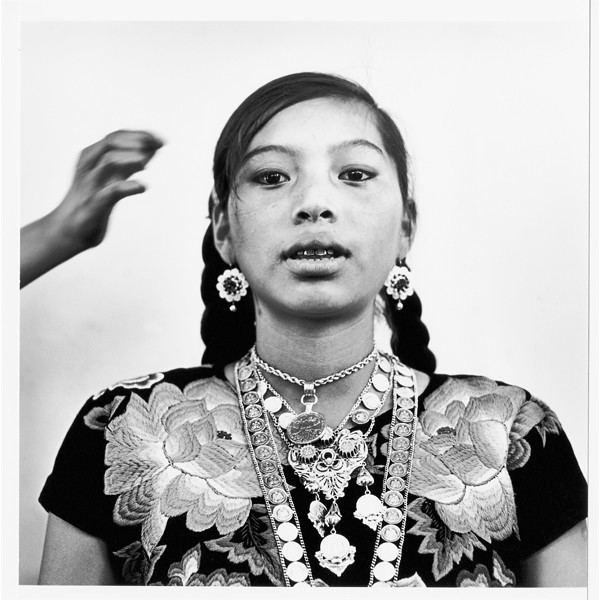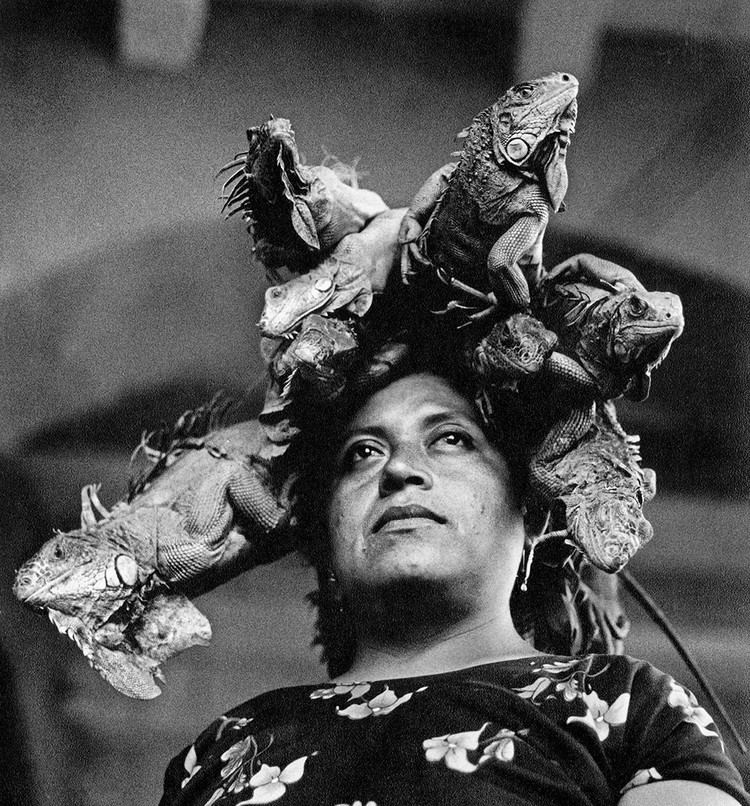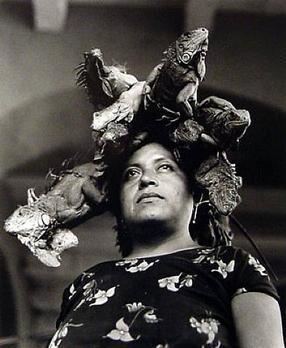Nationality Mexican Name Graciela Iturbide | Role Photographer | |
 | ||
Full Name Graciela Iturbide Education Centro Universitario de Estudios Cinematograficos (1969–1972) Books Fernell Franco: Amarrados [Bound] Awards Hasselblad Award, Guggenheim Fellowship for Creative Arts, Latin America & Caribbean | ||
An evening with graciela iturbide icptalks
Graciela Iturbide (born 1942 in Mexico City) is a Mexican photographer. Her work has been exhibited internationally and is included in many major museum collections.
Contents
- An evening with graciela iturbide icptalks
- Graciela iturbide photographing mexico art21 exclusive
- Biography
- Photography career
- Mujer ngel
- Nuestra Seora de Las Iguanas and Magnolia
- Publications
- Awards
- Exhibitions selected
- Collections
- References

Graciela iturbide photographing mexico art21 exclusive
Biography

Graciela Iturbide was born in Mexico in 1942, the eldest of thirteen children. She was exposed to photography early on in life. Her father took pictures of her and her siblings and she got her first camera when she was 11 years old. When she was a child, her father put all the photographs in a box and she said "it was a great treat to go to the box and look at these photos, these memories."

She married the architect Manuel Rocha Díaz in 1962 and had three children over the next eight years.
Photography career

Iturbide turned to photography after the death of her six-year-old daughter, Claudia, in 1970. She studied at the Centro Universitario de Estudios Cinematográficos at the Universidad Nacional Autónoma de México, where she met her mentor, the teacher, cinematographer and photographer Manuel Álvarez Bravo. She traveled with Bravo between 1970 and 1971 and learned that "there is always time for the pictures you want." In 1971 she was awarded the W. Eugene Smith Grant, and a scholarship at the Guggenheim College. Iturbide photographs everyday life, almost entirely in black-and-white. She was inspired by the photography of Josef Koudelka, Henri Cartier-Bresson, Sebastiao Salgado and Álvarez Bravo. Her self-portraits especially reflect and showcase Bravo’s influence and play with innovation and attention to detail. She became interested in the daily life of Mexico's indigenous cultures and people (the Zapotec, Mixtec, and Seri) and has photographed life in Mexico City, Juchitán, Oaxaca and on the Mexican/American border (La Frontera). With focus on identity, sexuality, festivals, rituals, daily life, death and roles of women; Iturbide’s photographs share visual stories of cultures in constant transitional periods. There’s also juxtaposition within her images between urban vs rural life and indigenous vs modern life. Iturbide's main concern has always been the exploration and investigation of her own cultural environment. She uses photography as a way of understanding Mexico; combining indigenous practices, assimilated Catholic practices and foreign economic trade under one scope.
"Mujer Ángel"
In 1978, Iturbide was commissioned by the Ethnographic Archive of the National Indigenous Institute of Mexico to work on a series about Mexico’s Seri Indians - a group of fisherman living in the Sonora desert along the Arizona/Mexico border. She was in Punta Chueca for a month and a half working on the series. There were about 500 people within the community. It was while working for this series that her photograph called "Mujer Ángel" was taken. The image depicts a Seri woman while on an expedition to a cave with indigenous paintings. The woman “looked as if she could fly off into the desert” and was carrying a tape recorder exchanged for handicrafts by Americans. "Mujer Ángel" was used by the politically charged metal group Rage Against The Machine for their single "Vietnow" in 1997.
In 1979, Iturbide was asked by painter Francisco Toledo to photograph the Juchitán people who form part of the Zapotec culture native to Oaxaca, Mexico. The women were economically, politically, and sexually independent. This experience as a photographer shaped Iturbide's views on life, making her a strong supporter of feminism. Iturbide worked on this series for almost 10 years, ending in 1988. This collection resulted in the book Juchitán de las Mujeres.
"Nuestra Señora de Las Iguanas" and "Magnolia"
Some of the inspiration for her next work came from her support of feminist causes. Her well-known photograph, "Nuestra Señora de Las Iguanas" (Our Lady of the Iguanas) came from her photo essay "Juchitán of the Women (1979–86)" which was also shot in Juchitán de Zaragoza. Filmmakers Susan Streitfeld and Julie Hébert used this photo as an icon in their film Female Perversions (1996). Her work in Juchitán was not only about women, however: she also shot "Magnolia", a photo of a man wearing a dress and looking at himself on a mirror, which some cite as evidence that Iturbide also explored sexuality among Mexicans.
Iturbide has also photographed Mexican Americans in the White Fence (street gang) barrio of Eastside Los Angeles as part of the documentary book A Day in the Life of America (1987). She has worked in Argentina (in 1996), India (where she made her well-known photo, "Perros Perdidos" (Lost Dogs)), and the United States (an untitled collection of photos shot in Texas).
One of the major concerns in her work has been "to explore and articulate the ways in which a vocable such as 'Mexico' is meaningful only when understood as an intricate combination of histories and practices."
She is a founding member of the Mexican Council of Photography. She continues to live and work in Coyoacán, Mexico.
In awarding her the 2008 Hasselblad Award, the Hasselblad Foundation said:
Graciela Iturbide is considered one of the most important and influential Latin American photographers of the past four decades. Her photography is of the highest visual strength and beauty. Graciela Iturbide has developed a photographic style based on her strong interest in culture, ritual and everyday life in her native Mexico and other countries. Iturbide has extended the concept of documentary photography, to explore the relationships between man and nature, the individual and the cultural, the real and the psychological. She continues to inspire a younger generation of photographers in Latin America and beyond.
The largest institutional collection of Iturbide's photographs in the United States is preserved at the Wittliff collections, Texas State University, San Marcos, TX.
Publications
Awards
Exhibitions (selected)
Collections
Iturbide's work is held in the following permanent collections:
